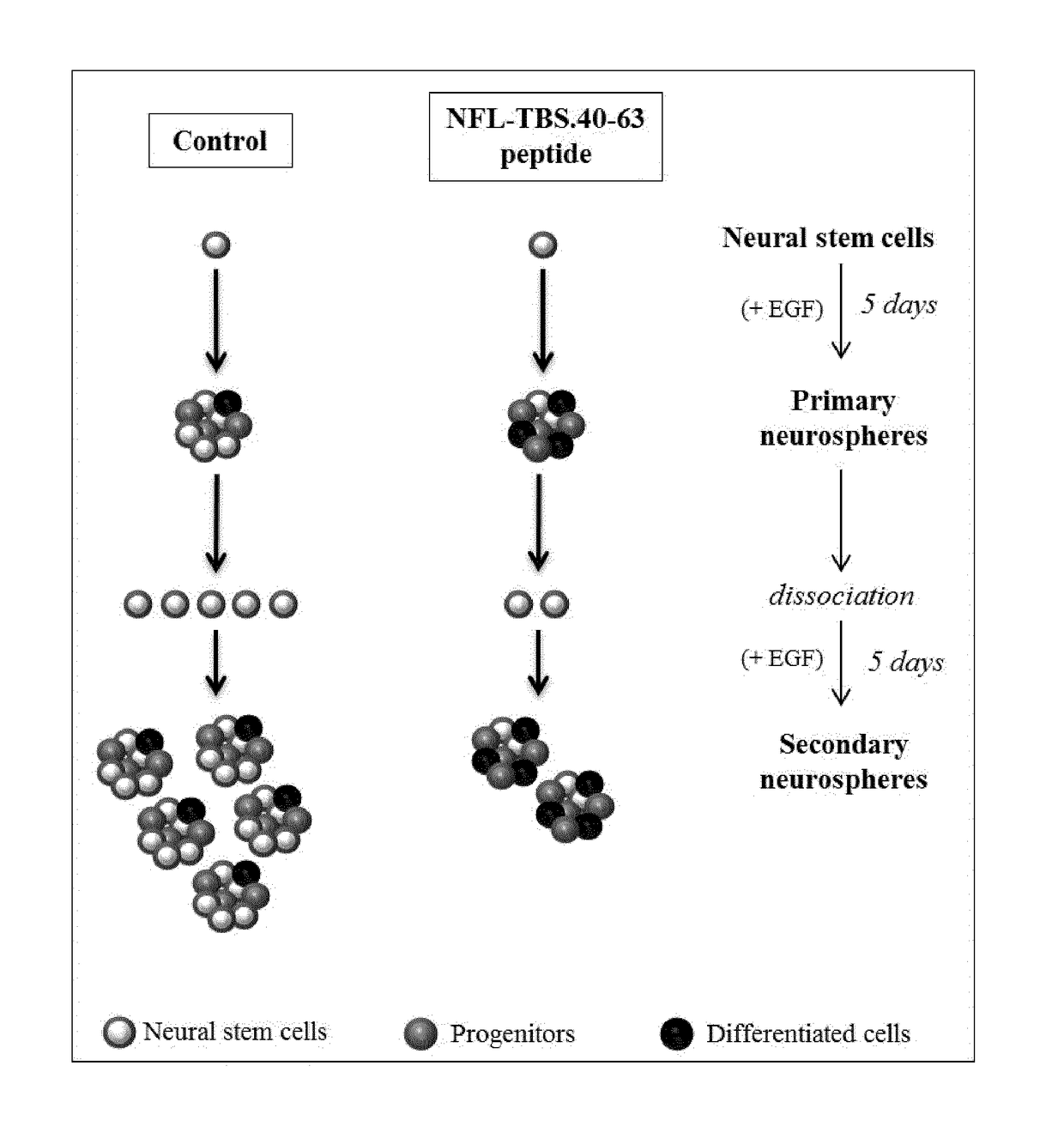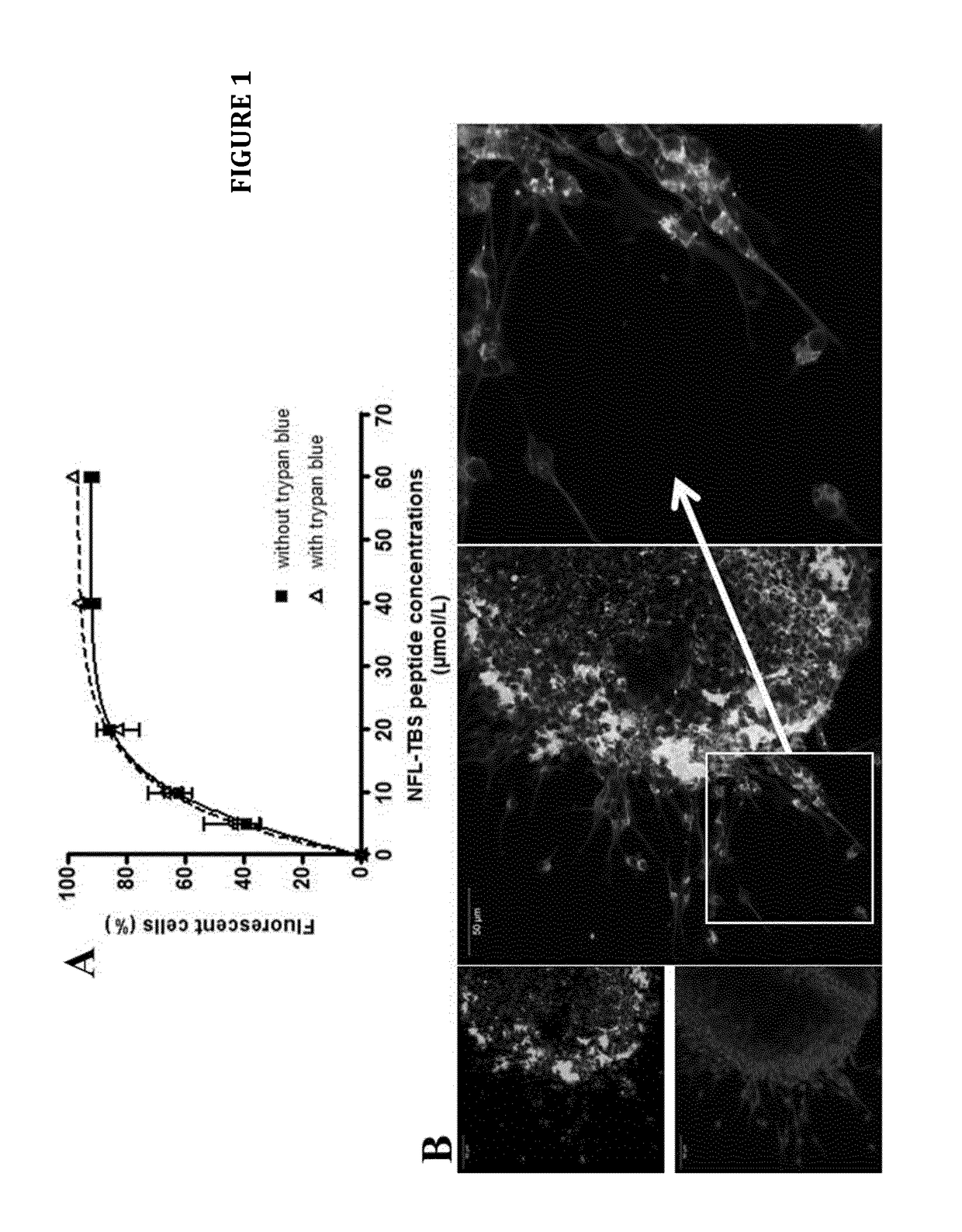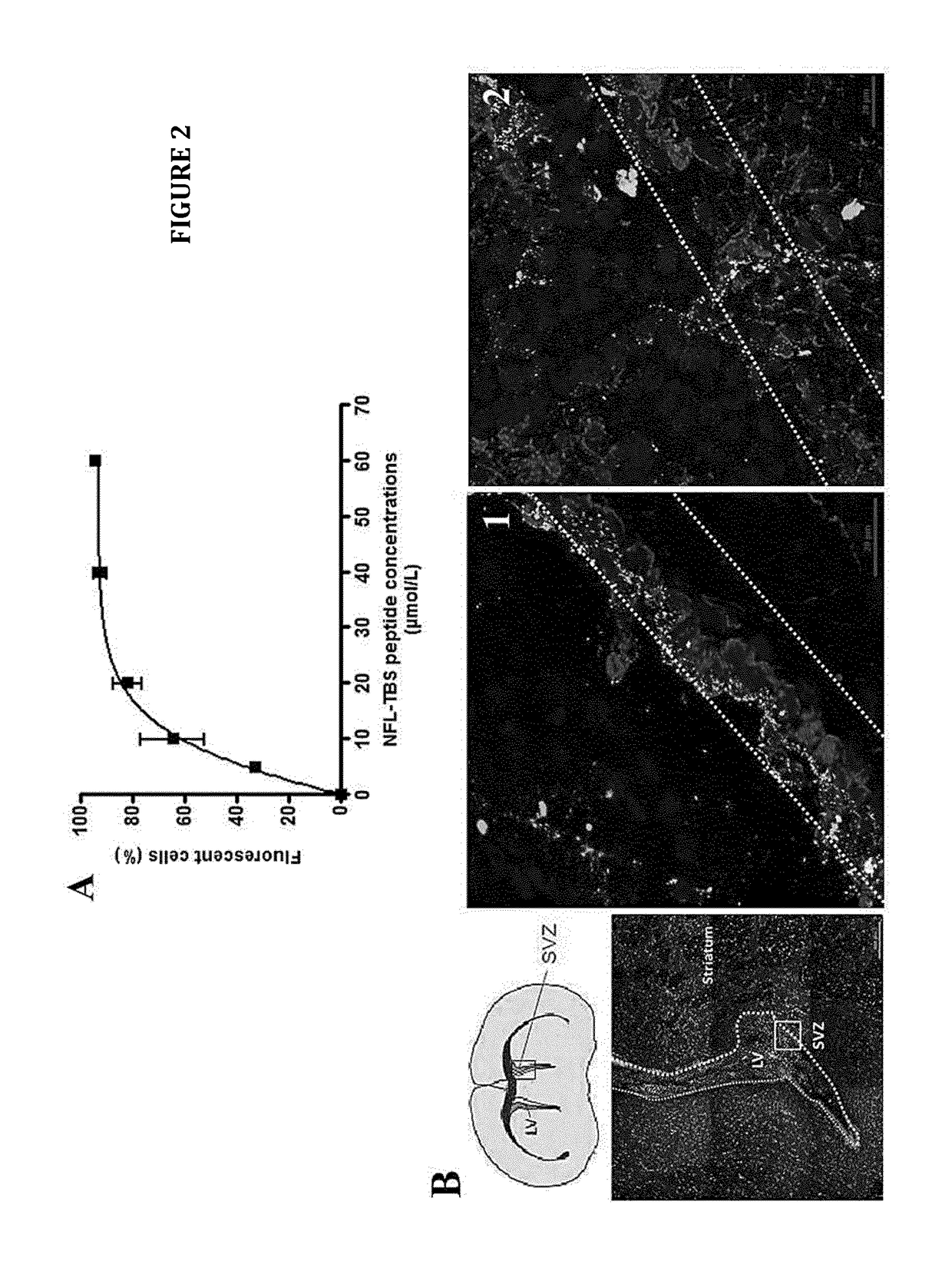Use of a Neurofilament Peptide for Targeting Neural Stem Cells
a neural stem cell and neurofilament technology, applied in the direction of peptide/protein ingredients, instruments, drug compositions, etc., can solve the problems of difficult identification of these cells and targeting therapeutic molecules, and cells unsuitable for further experimental and therapeutic applications
- Summary
- Abstract
- Description
- Claims
- Application Information
AI Technical Summary
Benefits of technology
Problems solved by technology
Method used
Image
Examples
examples
[0109]Abbreviations: CED: convection-enhanced delivery; DAPI: 4′6-diaminido-2-phenylindole; DAM: 5-(N,N-dimethyl) amiloride hydrochloride; DNA: deoxyribonucleotic acid; DG; dentate gyrus; EGF: epithelial growth factor; FITC: carboxy-fluorescein isothiocyanate; GFAP: glial fibrillary acidic protein; NBCS: new-born calf serum; NFL-TBS: neurofilament light subunit-tubulin binding site; NSC: neural stem cell; PBS: phosphate buffer sodium; PE: R-phycoerythrin; PI: propidium iodide; PMA: phorbol 12-myristate 13-acetate; PSA-NCAM: polysialic acid neural cell adhesion molecule; SEM: standard error of the mean; SVZ: sub-ventricular zone.
Cell Culture and Material
[0110]Primary cultures of neural stem cells are derived from the sub-ventricular zone of newborn (1-5 days) or adults (<4 months) brain Wistar rats. The dissociated cells were grown in MEM alpha (PAA) supplemented with 25 mmol / L D-glucose (Sigma), 1 mmol / L Na Pyruvate, 15 mmol / L HEPES, 5% penicillin / streptomycin (PAA) and 1% B27 (Gibc...
PUM
| Property | Measurement | Unit |
|---|---|---|
| weight | aaaaa | aaaaa |
| weight | aaaaa | aaaaa |
| concentrations | aaaaa | aaaaa |
Abstract
Description
Claims
Application Information
 Login to View More
Login to View More - R&D
- Intellectual Property
- Life Sciences
- Materials
- Tech Scout
- Unparalleled Data Quality
- Higher Quality Content
- 60% Fewer Hallucinations
Browse by: Latest US Patents, China's latest patents, Technical Efficacy Thesaurus, Application Domain, Technology Topic, Popular Technical Reports.
© 2025 PatSnap. All rights reserved.Legal|Privacy policy|Modern Slavery Act Transparency Statement|Sitemap|About US| Contact US: help@patsnap.com



